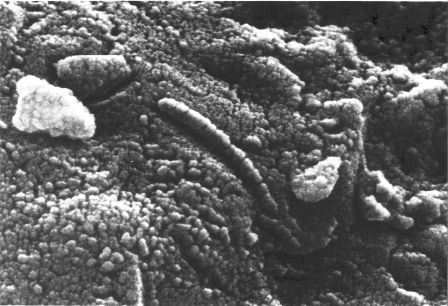- Series:God’s Design, Transcript English
Job 9:10
“Which doeth great things past finding out; yea, and wonders without number.”
How small can a living thing be and still be considered alive? Viruses are not considered living things because they cannot reproduce on their own. But now scientists have confirmed the  existence of bacteria that are smaller than the largest viruses and yet can reproduce on their own. They call this amazing class of bacteria nanobacteria. They are less that 20 percent the size of normal bacteria.
existence of bacteria that are smaller than the largest viruses and yet can reproduce on their own. They call this amazing class of bacteria nanobacteria. They are less that 20 percent the size of normal bacteria.
The unusual nanobacteria have some unusual abilities. Normally, cells in the immune system detect a bacterium in the bloodstream, engulf it, and destroy it. But nanobacteria are able to trick immune cells into committing suicide. Luckily, nanobacteria reproduce very slowly. While the average bacteria reproduces once an hour, nanobacteria take three days to double their numbers. But they still do a lot of damage. Researchers have found that nanobacteria are apparently able to build a calcium shell around themselves. It appears that when they enter the bloodstream, they quickly migrate to the kidneys, where they begin building their shells. Researchers investigating whether nanobacteria cause painful kidney stones have reported testing 30 stones so far. Each stone showed antibodies that bind to nanobacteria. The good news is that if nanobacteria are a cause of kidney stones, they can be eradicated with antibiotics.
While scientists are unsure of how something so small can be alive, our wonderful Creator is able to fashion even these tiny, amazing creatures.
Prayer:
I rejoice and praise You, dear Father, for the wonder of Your creation. Amen.
Notes:
John Travis, The Bacteria in the Stone, Science News, v. 154, p.75. Photo: Structures found on meteorite fragment. Courtesy of Allan Hills. (PD)
